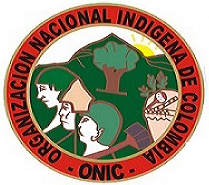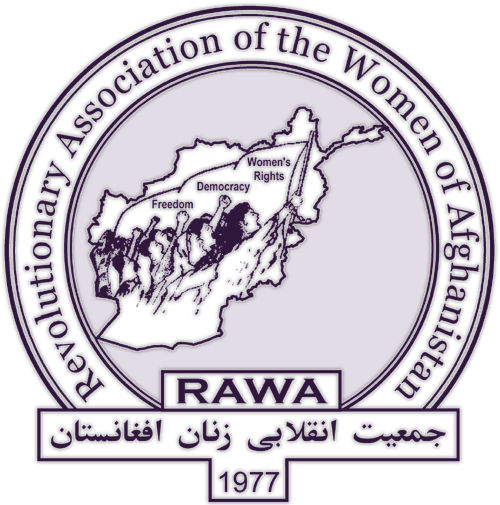mining
Peru: new violence over La Oroya metal complex
Residents in of Simón Bolívar, in Peru's Pasco region, clashed with National Police in a highway confrontation Sept. 23, as they were returning from a cross-country march to La Oroya metal-smelting complex in neighboring Junín region. One protester was injured with a blow to the head in the fracas, which apparently began when an officer made a death threat to the passing demonstrators. The marchers intend to continue to Lima, and an officer reportedly told them that if they attempted to advance towards the capital they would "die like dogs." The protesters are demanding health and environmental remediation measures to address contamination of the area's waters with heavy metals from the Oroya complex. (RPP)
Ecuador: protesters remobilize in Quito
Thousands of protesters again mobilized in Quito on Sept. 16—this time without violent incidents. The march, concluding in the city's Plaza Santo Domingo, was again called by the Unitary Workers Front (FUT) and the Confederation of Indigenous Nationalities of Ecuador (CONAIE), to oppose President Rafael Correa's proposed labor reforms and "extractivist" economic model based on natural resource exploitation. CONAIE president Jorge Herrera said a new demand is "freedom for the political prisoners" who were detained during last month's larger protest campaign, which saw street clashes in Quito and elsewhere in the country.
Argentina: protests follow gold mine cyanide spill
Residents of San Juan Jáchal, in Argentina's northwestern province of San Juan, took to the streets in protest after an industrial malfunction caused a pipe carrying cyanide to Barrick Gold's nearby Veladero gold mine to rupture and spill an undetermined amount of its contents in the area on Sept. 13. Protesters who converged on the town hall said town residents had repeatedly warned on social media and through text messages to authorities that the pipe had a faulty valve—and that no move to address the problem was taken even after messages reported that spills had reached the banks of the Río Jáchal. The river is the source of water for the town, and municipal taps have been cut off since the spill. (MercoPress, InfoBae, Sept. 16; Reuters, InfoBae, Sept. 14)
Bolivia: Potosí mine at issue in regional strike
Protesters cut off access to the Bolivian mining city of Potosí for most of last month in a dispute with the central government over infrastructure investment. Access to the city of more than 130,000 was blocked by thousands of protesters as part of a civil strike called by the Comité Cívico Potosinista (COMCIPO). The strike was "suspended" after 27 days on Aug. 2, when the city had almost run out of petrol, food and money. But organizers declared President Evo Morales and his cabinet members "enemies of Potosí" and "persona non grata" throughout the department. They also called for the resignation of the city's mayor, William Fernández, and the departmental prefect, Juan Carlos Cejas, both from Bolivia's ruling Movement Toward Socialism (MAS).
Peru: La Oroya protests turn deadly
Workers at La Oroya on Aug. 13 lifted an "indefinite strike" declared two days earlier, and relaxed their blockades of the highway through central Peru's Junín region. The first day of the strike saw one worker killed by a bullet to the chest and some 60 others injured in clashes with the National Police. The decision to "suspend" the strike was taken after union representatives met in Lima with officials from the Environment and Labor ministries, and National Office of Dialogue and Sustainability (ONDS), a new body established to address social conflicts. Officials promised union leaders to try find a way to keep the troubled Oroya Metallurgical Complex open. But deadlines are looming: the workers say they will resume their strike if a solution is not found within eight days. Meanwhile, creditors of complex owner Doe Run say if there are no bidders for the smelters and associated Cobriza mine by Aug. 27, the company will go into liquidation. Peru's government rejected worker demands to ease the legal limit on sulfur dioxide emissions for the complex to allow it to re-open.
Peru: mine opponents disrupt Arequipa festivities
Opponents of the disputed Tia Maria mega-mine project organized a dissident contingent at the "Friendship Parade" through the capital of Peru's southern Arequipa region, during festivities marking the 475th anniversary of the city's founding. Farmers from the Tambo Valley, barred by organizers from having a politically themed float in the Aug. 15 parade, marched alongside it, chanting "¡Agro sí, mina no!" (farming yes, mine no!). (Correo, Andina, Aug. 15; Peru this Week, Aug. 12) Protests over the project have resumed since a 60-day state of emergency instated for Islay province in May ran out. Mine opponents are meeting to discuss a region-wide general strike against the project. (Peru This Week, Aug. 10)
British Columbia mine waste spill: one year later
One year after a catastrophic dam breach at the Mount Polley Mine in the interior of British Columbia, the facility has passed the first phase of remediation and resumed operations—with certain restrictions. The August 2014 disaster sent millions of cubic meters of water contaminated with mine waste into the local Hazeltine Creek, which ultimately flows into the Fraser River. Water-use bans were issued for several local towns, and the spill prompted the government to toughen mine permitting requirements. Imperial Metals Corp has completed a "Phase 1" clean-up overseen by the BC Ministry of Environment. The company has supposedly ensured that water entering Quesnel Lake, which Hazeltine Creek flows through on its way to the Fraser, meets provincial quality standards. The provincial government issued the conditional permit allowing the Mount Polley mine to reopen earlier this month. However, the company cannot discharge water until it receives a second conditional permit, likely in the early fall. (Globe & Mail, July 29, 2015; ThinkProgress, Aug. 5, 2014)
Four Corners haze: harbinger of climate change
Just weeks before President Obama announced details of his climate change action plan, federal officials approved a deal to allow expanded mining of coal on Navajo lands and its continued burning at the Four Corners Power Plant near Farmington, NM. The deal extends the lease on the plant by 25 years, and allows for an expansion of the Navajo Mine that supplies it. It came less than a month after operators of the Four Corners plant (chiefly Arizona Public Service) agreed to settle a lawsuit by federal officials and environmental groups that claimed plant emissions violated the Clean Air Act. Under the settlement, operators agreed to spend up to $160 million on equipment to reduce harmful emissions, and to set aside millions more for health and environmental programs. The regional haze produced by the plant and others ringing the Navajo reservation has long drawn protest. Under pressure from the EPA, the plant in 2013 shut down the oldest and dirtiest three of the five generating units to help the facility meet emission standards. But many locals are not appeased. "Our Mother Earth is being ruined," said Mary Lane, president of the Forgotten People, a grassroots Navajo organization. "We don't want the power plant to go on. It's ruining all the environment, the air, the water." (Navajo-Hopi Observer, July 21)















Recent Updates
8 hours 43 min ago
8 hours 50 min ago
12 hours 31 min ago
12 hours 44 min ago
12 hours 52 min ago
3 days 15 hours ago
6 days 15 hours ago
1 week 18 hours ago
1 week 18 hours ago
1 week 1 day ago